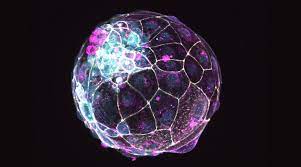To model human embryos and study our earliest days, scientists use stem cells
To better understand the intricacies of early human development, prenatal medical issues, and why so many pregnancies fail, scientists have developed models of embryos. These models cannot develop into children since they are generated from stem cells rather than egg and sperm. Insoo Hyun, an ethicist and the head of life sciences at Boston’s Museum of Science, stated, “They’re complete enough to give you a picture of what may be happening in the embryo during pregnancy, but they’re not so complete that you could actually use them for reproduction.” It just won’t work.
He said that employing models also eliminates the ethical dilemma of using actual embryos in study.
On the study, many groups are working. In two studies that were published in the journal Nature on Tuesday, teams that included academics from the United States and England discussed their results. Earlier this month, unreviewed papers on the work of other scientists in Israel and China were released.
Hyun said that current models replicate an embryo after it has implanted in the uterus, as opposed to earlier models that emulated pre-embryos. Because they burrow into the uterus at that time, actual human embryos may be quite difficult to view. He noted that the methods used and the degree of completion of each team’s models varied, with some matching not just the embryo but also the early stages of the placenta and yolk sac.
For these models, researchers use a sort of stem cell that can differentiate into a wide variety of bodily tissues or cells. They may come from adult tissues or be reprogrammed from embryonic cells.
Nine to fourteen days after fertilization, the authors of one Nature research described models that resemble human embryos.
Berna Sozen, a developmental stem cell biologist at Yale University, stated, “If we can experimentally model this period, then we can finally start asking questions about how human development happens in those very early stages that are normally hidden within the body of the mother.”
According to Sozen, researchers will be able to analyze pregnancy loss, developmental abnormalities, and embryonic failure. We don’t know how it goes wrong at this stage, she added.
Magdalena Zernicka-Goetz, a stem cell biology specialist at the California Institute of Technology and the University of Cambridge in England, and colleagues claimed in the other Nature study that their model mimics development up to 14 days after fertilization. The model includes tissues that may develop into structures like the yolk sac and placenta, which surround the embryo.
Author of a manuscript that has not yet been peer-reviewed, Jacob Hanna of the Weizmann Institute of Science in Israel, said via email that the model used by his team also accurately simulates human embryo development up to day 14 after fertilization. All embryonic membranes as well as membranes outside the embryo are included in the structures, according to him.
Before, Hanna and Zernicka-Goetz both contributed to the development of mouse embryo models.
In the future, Zernicka-Goetz suggested using human embryo models to investigate how the environment and chemicals affect early development. She even suggested that they may be utilized to produce tissues for novel medical procedures.
Sozen also anticipates doing experiments that are illegal on pregnant women, such as testing medications on embryo models and exposing them to pathogens.
According to International Society for Stem Cell Research guidelines, researchers are not allowed to implant any human embryo model into a human or non-human uterus. The organization had a similar “14-day rule” for decades that instructed scientists on how long real embryos might be nurtured in the lab; in 2021, the group advocated easing the restriction in some cases. The models, however, are exempt from the ban since they are not embryos.
According to experts, some members of the general public have the incorrect impression of these models and think they would be able to induce pregnancy. But obstacles in science stand in the way. For instance, their placenta does not mature properly. According to Hyun, who is also a member of the Harvard Medical School’s Center for Bioethics, there are methods to prevent dishonest actors who may wish to attempt to establish pregnancies from embryo models in the future as the science develops.
He said that the lack of completion is ethically justified since “the whole point of these models is to avoid the embryo controversy.”







